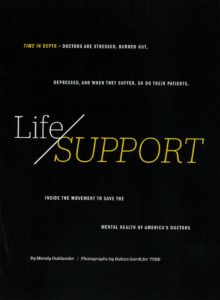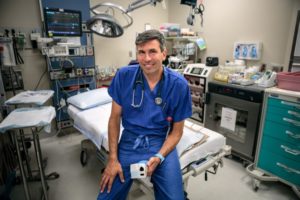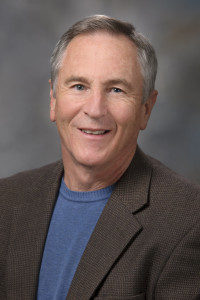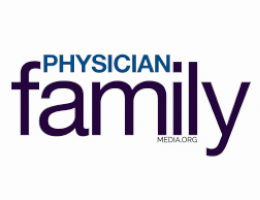(Editor’s Note: This blog was originally published on Warren Holleman’s personal blog, Work Well, Be Well, in October 2015 and is republished here with his permission. You can link to the original post here: http://www.workwellbewell.com/work-life-balance/milk-and-cookies-for-doctors-on-life-support-and-other-cheery-thoughts-about-work-life-imbalance-2/)

Milk and Cookies for Doctors on Life Support, and Other Cheery Thoughts about Work-Life Imbalance
By Warren Holleman
This past month several of you sent me articles that I read and enjoyed. Thanks! Here are my favorites.
- Doctors on Life Support

If you read one thing this year, read “Life/Support: Inside the Movement to Save the Mental Health of America’s Doctors.” This article, written by Mandy Oaklander and published in Time Magazine (Sept 7-14), chronicles a typical day in the life of a group of young Stanford surgeons. Oaklander shows how long shifts and toxic working conditions contribute to alarming rates of job burnout, clinical depression, and suicide.
The general public often views being a physician as a glamorous career. This essay shows that it is anything but. Especially for resident physicians (young trainees).
For those of us who are not physicians, this is a MUST read in terms of understanding and appreciating the hard work our physicians do and the burdens they carry. And, of course, the implications for quality of care and safety. And why the American Association of Medical Colleges predicts an alarming shortfall of 90,000 physicians over the next 10 years.
For those of you who are physicians, warning! This article is likely to trigger bad memories and PTSD symptoms—seriously.
(I would offer a link to the article, but I can’t do it legally. You’ll have to log on to Time Magazine’s web site, borrow from a friend, or just go to the library.)
- Milk and Cookies for Doctors on Life Support
Staying at Stanford, but on a somewhat more positive note, I offer you This Washington Post article shows how the Stanford ER department is trying to help their overworked doctors by providing rewards and services in exchange for their overtime labor. Like many departments, the Stanford ER department has had trouble retaining their physician workforce. Looming on the horizon is a massive physician shortage, and the Stanford program is a microcosm of the problem.
 Photo from the Washington Post
Photo from the Washington Post
Here’s how it works: “Doctors can ‘bank’ the time they spend doing the often-unappreciated work of mentoring, serving on committees, covering colleagues’ shifts on short notice or deploying in emergencies, and earn credits to use for work or home-related services.” For example, ER docs can arrange for ready-made meals to be delivered to their homes when they arrive at 11pm after a 24-hour shift.
The glass-half-full part of me appreciates the effort to palliate the pain of doctors’ unreasonable work schedules. But, to the skeptical part of me, this is a little like putting a health spa in a sweatshop. Lots of hospitals and medical centers are doing that these days—including the one where I work—and in some ways it’s a nice gesture. But it doesn’t address the real problem: the toxic working conditions. It’s more of a Band Aid than a cure. And sometimes it feels like we’re blaming the victim. (“You’re burned out? You should go exercise and eat your vegetables. Then get back to work for another 14 hours!” Or: “You’re burned out? Again? We gave you a free gym. What more do you want?”)
The real problem is why we expect our physicians to work 60, 80 or even 100 hours a week in the first place.
So much for understanding why we have an impending labor shortage in American medicine. And, why I believe that providing a concierge service for overworked physicians sounds closer to Marie Antoinette’s “Let them eat cake” than a real solution to the real problem.
For all the work the ER docs do, they deserve better. And for all the pay today’s health care executives receive, you’d think they could come up with solutions more substantial and more systemic than gift coupons to a catering service.
In fairness to the Stanford ER department, the Washington Post article isn’t clear whether the primary mission of the program is to compensate for the long hours worked in the sweat shop or to reward those who take upon themselves additional uncompensated responsibilities such as mentoring and committee work. If it is the latter, then it is a humane gesture, and I have many physician friends who would appreciate this level of recognition for all the extra duties they volunteer for.
But it still seems to me that this is only a halfway “Let them eat cake” solution that fails to address the underlying problem. If doctors have to work overtime to get all the work done, why not pay them for it? Or, better, why not incorporate the intangibles such as mentoring, committee work, and covering for colleagues into their workloads as “administrative” time in which they are exempt from clinic duties? Many health care systems do give physicians a half-day or so of administrative time, but the problem is that their clinic overloads spill into that time. So the ultimate solution will be to limit their clinical loads to levels that are safe, realistic, and humane.
- How to Avoid “Rising to Your Level of Misery”
If you want to read something that could help you become truly happy, take a look at “Rising to the Level of Your Misery,” published last month in the NY Times. Arthur Brooks, President of the American Enterprise Institute, takes the Peter Principle, which states that good workers tend to be promoted beyond the level of their competence, and adds that we also rise to the level of our misery. The solution, he says, is to re-define our work and our mission in terms of service—not success.

Too many people, Brooks says, lose sight of the meaning behind their work, and instead chase promotions, power, prestige, and the almighty dollar. They wind up miserable, burned out, and dissatisfied by their jobs and their careers.
I think people get caught up in a fast track and don’t know how to jump off the train. What they need is a solid support network of professional peers who share their values and priorities. Here in the Texas Medical Center we have one such group. It’s called “Meaning in Medicine,” a group of physicians and medical students who meet once a month to discuss their values and their priorities, and their struggles and their successes in making their deeds match their words. I can’t attend–I’m not a physician–but those who do derive strength and support from their colleagues.
In my opinion, Brooks is “spot on” in his assessment of the values and priorities that get a lot of professionals into trouble. And, just for the record, I’m saying this as a lifelong Democrat, praising a conservative thought leader. Which leads me to go one step further and state my belief that much of the ideological posturing by our elected leaders, at least at the national level, is just that: posturing. When someone has a good idea, it doesn’t have to be conservative or liberal. It’s just good and right. As Thomas Paine said, it’s just common sense. And, in this case, it may be the secret to living a long, happy, healthy life.
- Being too “Mindful” of Productivity
Finally, I recommend a recent article from the Harvard Business Review: “Is Something Lost When We Use Mindfulness as a Productivity Tool?” The author, Charlotte Lieberman, starts off with a striking example of her own abuse of Adderall as a college student. She says her intention wasn’t to get “high” but rather to improve her performance on tests. She points out that many companies and organizations now train their employees in mindfulness for the same shortsighted reason.
Lieberman argues that what motivates most health professionals isn’t productivity (quantity of work) but quality. And when we do something for our own health, we don’t do it to be more productive, but because it’s the right thing to do regardless of impact on productivity. Taking care of one’s health is an end in itself, not a means to an end! Improvements in productivity are, at best, a nice side effect of doing the right thing.
(I can’t give a direct link to the HBR article, but if you log onto https://hbr.org/register, you are allowed to view 5 articles of any issue and up to 15 per month for free. It’s a good deal.)

About Warren Holleman, PhD: I work at the University of Texas MD Anderson Cancer Center, where I serve as professor of behavioral science and director of a wellness program for faculty physicians and scientists. Clinically, I’m a marriage and family therapist. Prior to coming to MD Anderson, I served on the faculty of Baylor College of Medicine, focusing primarily on community health, medical humanities, and behavioral medicine. On the personal side, my wife, a family physician, and I have been married 38 years. We have a daughter and a son, and both are out of college and moving forward in their lives and their careers. My hobbies include trail running, mountain biking, writing plays, telling stories, and growing tomatoes.
Dr. Holleman blogs about work, stress, burnout and life in a physician family at http://www.workwellbewell.com.
